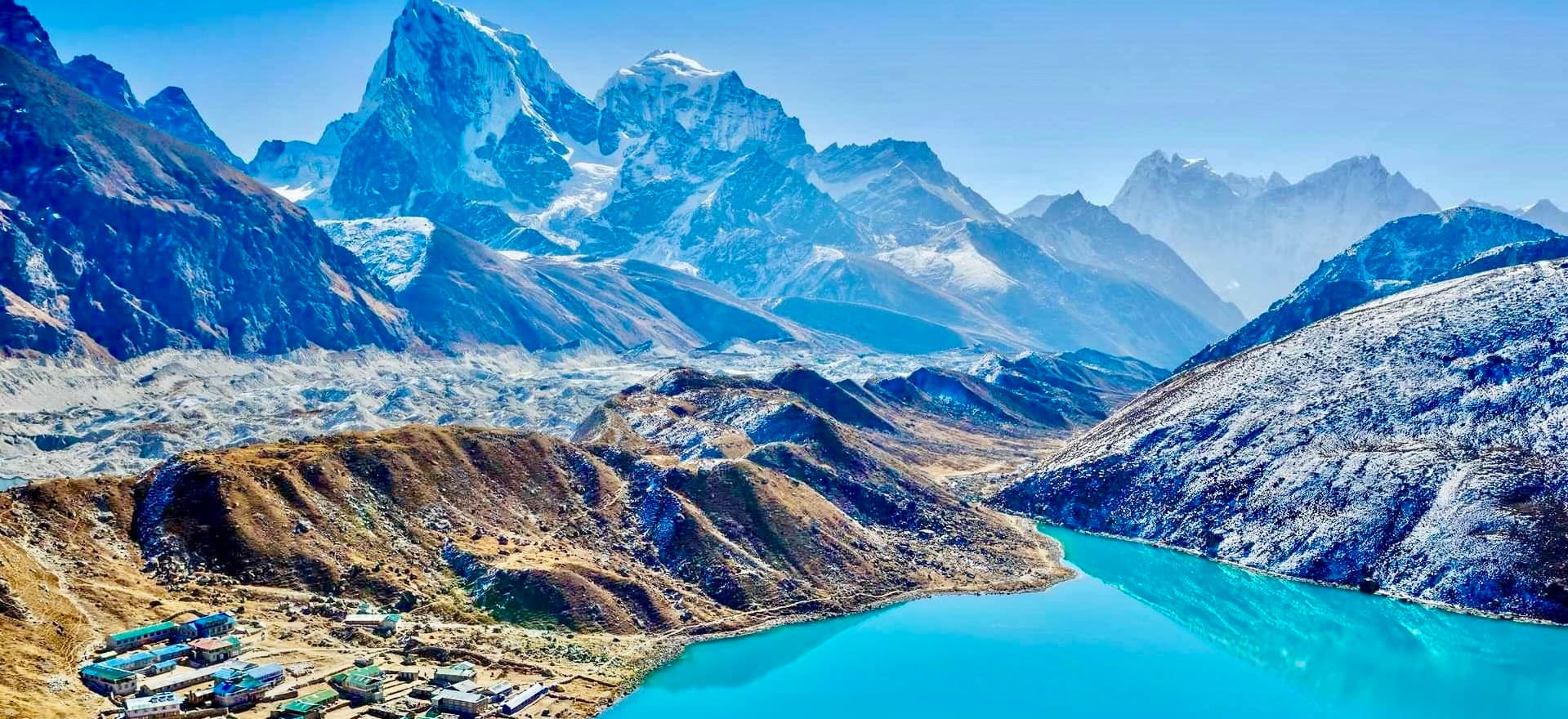The Everest Region is an experience filled with awe and wonder. This journey, meticulously planned by Luxury Holidays Nepal, takes you through some of the most spectacular landscapes and cultural hotspots in the world. From the iconic Everest Base Camp to the serene Gokyo Lakes, each destination offers a unique blend of natural grandeur and cultural richness. Trekking through this region is not just about the physical journey; it's an exploration of the soul, as you immerse yourself in the vibrant Sherpa Culture, traverse the challenging Three High Passes, and witness the serene beauty of the Tengboche Monastery. The trek also includes visits to lesser-known yet equally mesmerizing places like Ama Dablam Base Camp, Dingboche, and Pheriche, each offering a unique perspective of the Himalayas. With Luxury Holidays Nepal, prepare to embark on an unforgettable adventure that combines the thrill of trekking with the profound beauty of the Everest Region
We take great pride in being recognized as the foremost choice for adventurers seeking to explore the unparalleled destinations of the Everest Region. Our in-depth knowledge, experienced guides, and commitment to excellence make us stand out in crafting unforgettable trekking experiences. We meticulously plan every detail, ensuring our trekkers not only visit iconic spots like Everest Base Camp and Gokyo Lakes but also immerse themselves in the rich Sherpa Culture and breathtaking natural beauty of lesser-known gems like Ama Dablam Base Camp. Our personalized approach, safety protocols, and passion for showcasing the wonders of the Himalayas position us as the best company to guide you through this majestic region. Join us at Luxury Holidays Nepal for a journey that transcends the ordinary, blending adventure with cultural enrichment in the heart of the Himalayas.
Everest Base Camp
Everest Base Camp stands as one of the most iconic destinations for trekkers globally, a symbol of adventure set against the backdrop of the highest peak on Earth, Mount Everest. This legendary spot in the Everest Region offers an unparalleled trekking experience, filled with majestic landscapes and a sense of accomplishment like no other.
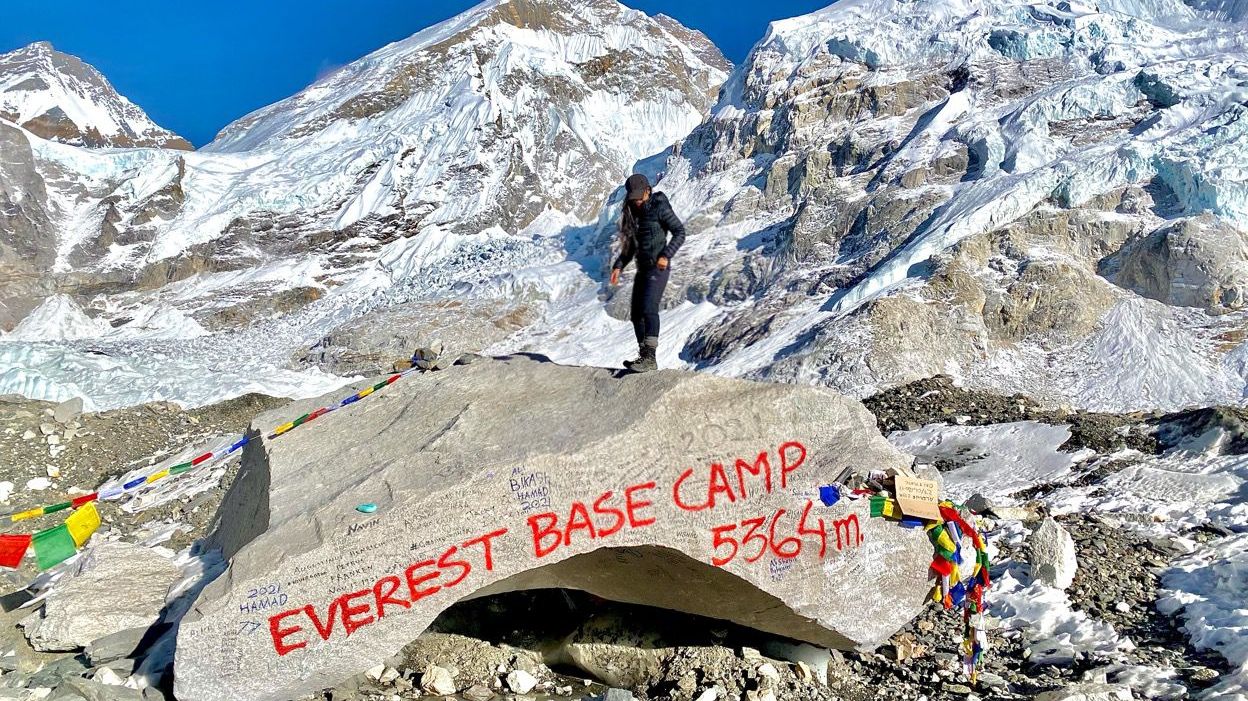
Key Highlights of Everest Base Camp
-
Spectacular Scenery: The trek to Everest Base Camp is adorned with breathtaking views of some of the world's highest peaks, including Everest, Lhotse, Nuptse, and more.
-
Challenging Trek: The journey to the base camp is both challenging and rewarding, suitable for trekkers who seek adventure and physical endurance.
-
Cultural Insights: Along the way, trekkers pass through Sherpa villages, monasteries, and prayer flags, offering a deep dive into the local culture and traditions.
-
Unique Ecosystem: The route traverses through diverse landscapes, including the Sagarmatha National Park, a UNESCO World Heritage Site, home to unique flora and fauna.
-
Kala Patthar Viewpoint: Many trekkers extend their journey to Kala Patthar, a nearby peak, for the best views of Everest's summit.
-
Personal Achievement: Reaching Everest Base Camp is considered a significant achievement, a testament to the trekker's determination and spirit of adventure.
-
Teahouse Trekking: The route is dotted with comfortable teahouses, providing trekkers with warm hospitality and a chance to interact with fellow adventurers.
-
Ever-changing Landscape: From lush forests to glacial moraines, the scenery changes dramatically, offering a dynamic and visually stunning experience.
-
High Altitude Experience: At 5,364 meters (17,598 ft), Everest Base Camp offers an authentic high-altitude trekking experience, making acclimatization an essential part of the journey.
-
Lifetime Memories: The trek to Everest Base Camp is more than just a trek; it’s an unforgettable experience filled with awe-inspiring moments that create lifetime memories.
With Luxury Holidays Nepal, trekkers can embark on this incredible journey with expert guidance, ensuring a safe, enjoyable, and memorable trek to Everest Base Camp, one of the most coveted destinations in the Everest Region.
Kala Patthar
Kala Patthar, often overshadowed by the fame of Everest Base Camp, is a remarkable destination in its own right within the Everest Region. This peak offers the most accessible and magnificent viewpoint to gaze upon Mount Everest, providing trekkers with an unparalleled panoramic view of the world's highest mountain and its surrounding peaks.
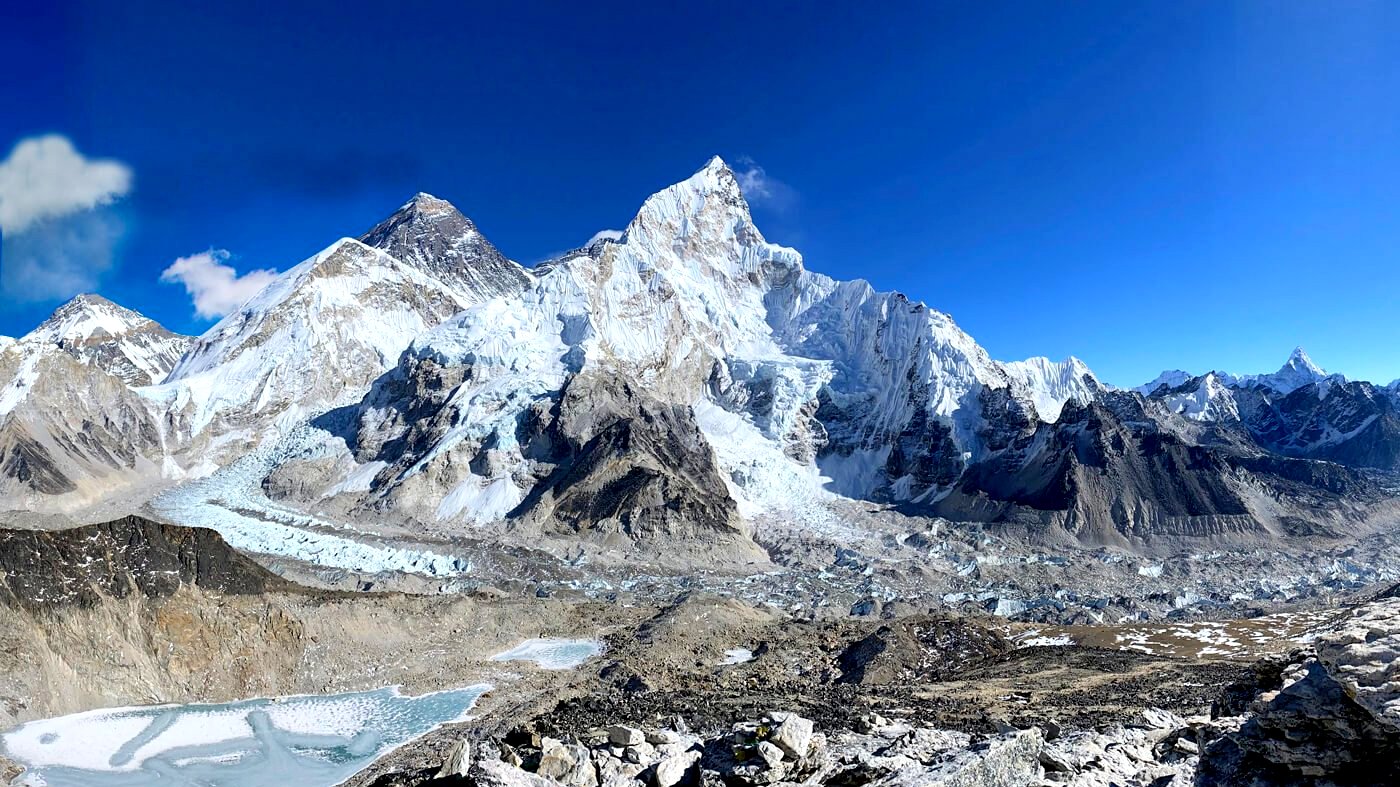
Key Highlights of Kala Patthar
-
Best Everest View: While Everest Base Camp brings you to the foot of the world's highest mountain, Kala Patthar offers the best view of Mount Everest's summit, making it a sought-after destination for trekkers.
-
Panoramic Vistas: From the summit of Kala Patthar, you can enjoy 360-degree views of Everest, Nuptse, Lhotse, and other majestic peaks in the Himalayan range.
-
Sunrise and Sunset Views: It's particularly famous for its sunrise and sunset views when the sun's rays paint the peaks in brilliant hues of orange and red.
-
Challenging Yet Rewarding Trek: The hike to Kala Patthar is challenging but offers a rewarding experience with every step, suitable for those who wish to push their limits.
-
Photography Opportunity: The scenic beauty and dramatic landscape make Kala Patthar a paradise for photographers aiming to capture the essence of the Himalayas.
-
Acclimatization Benefit: Its elevation at 5,644 meters (18,519 feet) aids in acclimatization for trekkers heading to higher altitudes.
-
Memorable Experience: The journey to Kala Patthar is filled with breathtaking scenery, making the trek a memorable experience beyond just the destination.
-
Accessible Trekking Route: Despite its high altitude, the trek to Kala Patthar is relatively accessible, with well-marked trails and manageable gradients.
-
Close Proximity to Everest Base Camp: Located near Everest Base Camp, it's often combined as part of the EBC trek, offering a comprehensive Everest experience.
-
Cultural Insights: The route to Kala Patthar winds through Sherpa villages and monasteries, offering cultural insights into the lives of the Himalayan people.
With Luxury Holidays Nepal, your trek to Kala Patthar is carefully planned to ensure a safe and exhilarating experience. This journey not only presents the physical beauty of the Himalayas but also symbolizes the spirit of adventure and exploration inherent in the Everest Region. Kala Patthar stands as a testament to the breathtaking wonders that the Himalayas have to offer.
Namche Bazaar
Namche Bazaar, often referred to as the gateway to the high Himalayas, particularly Mount Everest, is more than just a popular stopover for trekkers; it's a bustling hub of Sherpa culture and a focal point of trade and tourism in the Everest Region. This vibrant town is nestled in a natural amphitheater-like setting, offering breathtaking views and a unique cultural experience.
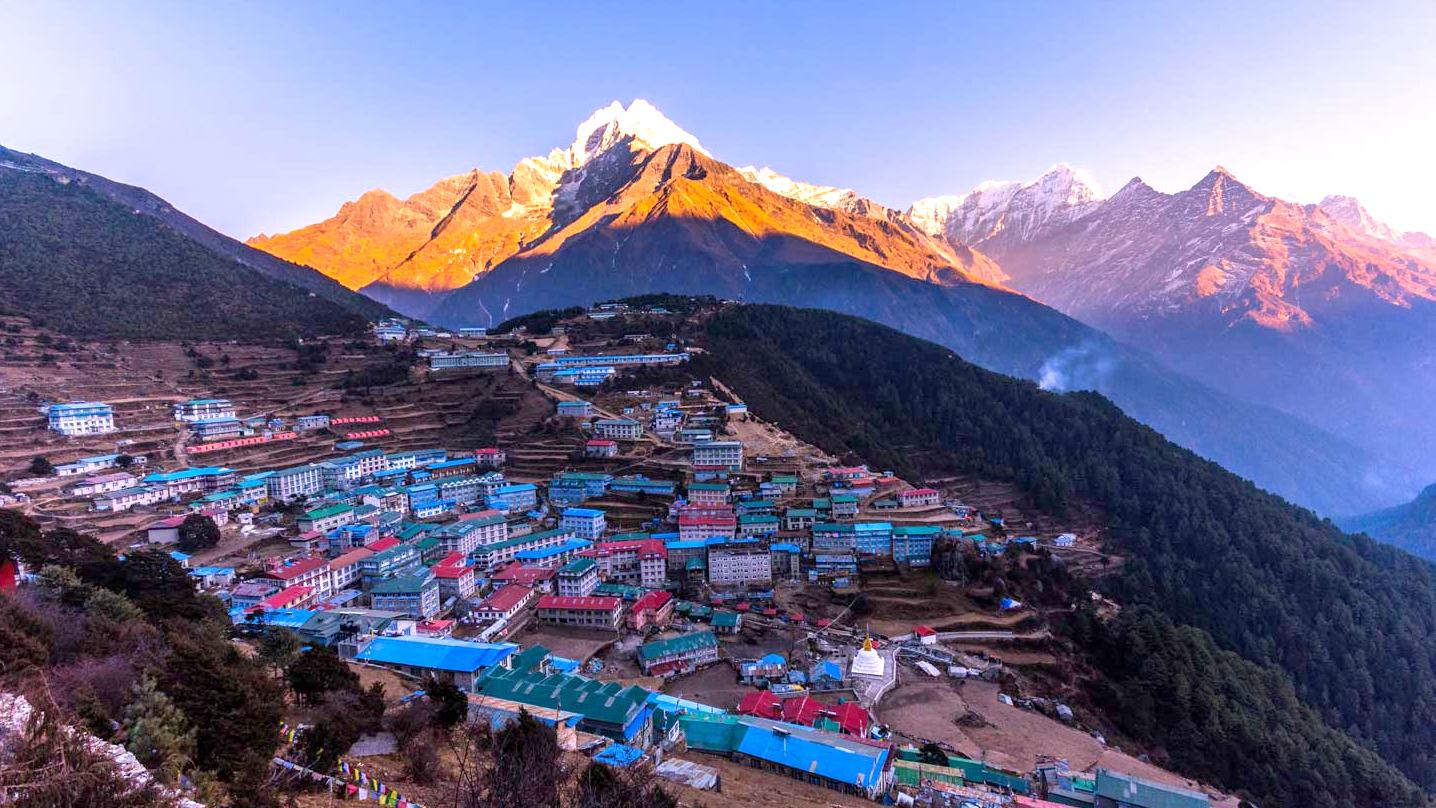
Key Highlights of Namche Bazaar
-
Cultural Epicenter: As the unofficial capital of the Khumbu region, Namche Bazaar offers a rich insight into Sherpa culture, traditions, and lifestyle.
-
Acclimatization Spot: Situated at an altitude of 3,440 meters (11,286 feet), it serves as an ideal place for trekkers to acclimatize to prevent altitude sickness.
-
Local Markets: The weekly market (usually held on Saturdays) is a bustling event where traders from nearby villages and Tibet sell goods, offering a colorful glimpse into local commerce.
-
Modern Amenities: Despite its remote location, Namche offers modern amenities such as internet cafes, bakeries, and even luxury lodges, making it a comfortable stop for trekkers.
-
Historical Significance: It has a long history as a trading post, with traders bringing goods like salt, meat, and textiles to barter for highland products.
-
Hiking Options: There are several short hikes from Namche that offer spectacular views of Everest, Ama Dablam, Thamserku, and other Himalayan giants.
-
Sherpa Culture Museum: The museum provides valuable insights into the history, culture, and mountaineering feats of the Sherpa people.
-
Panoramic Views: The location of Namche provides panoramic views of the surrounding Himalayan peaks, a visual treat for visitors.
-
Warm Hospitality: The town is known for its warm Sherpa hospitality, offering a welcoming atmosphere to trekkers and visitors.
-
Gateway to Further Adventures: Namche serves as a critical junction for trekkers heading towards Everest Base Camp, Gokyo Lakes, and other popular destinations in the region.
With Luxury Holidays Nepal, your visit to Namche Bazaar is not just a rest stop but a cultural immersion, offering a blend of modern comforts and traditional Sherpa heritage. As you trek through the Everest Region, Namche Bazaar stands as a testament to the resilience and hospitality of the mountain people, making it a must-visit destination in your Himalayan adventure.
Tengboche Monastery
Tengboche Monastery, nestled amidst the stunning backdrop of the Himalayan peaks, is more than just a place of worship; it is a spiritual haven that offers tranquility and a profound sense of serenity. Located in the Khumbu region of the Everest area, this monastery is not only a pivotal religious site for the Sherpa community but also a must-visit landmark for trekkers journeying through the Everest Region.
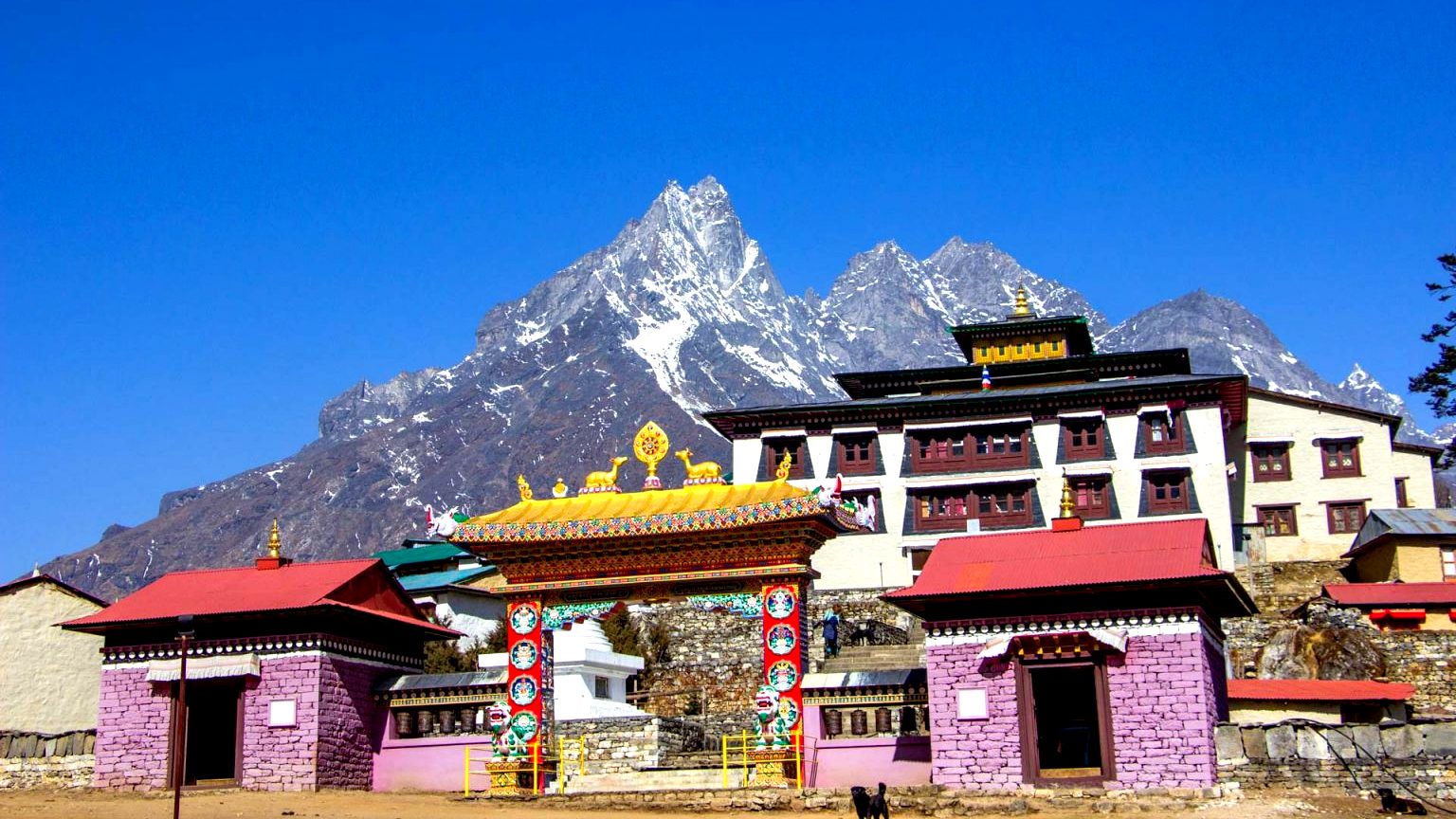
Key Highlights of Tengboche Monastery
-
Spiritual Significance: As one of the most important Buddhist monasteries in the Khumbu region, Tengboche is a center for spiritual activity and meditation.
-
Architectural Beauty: The monastery boasts traditional Sherpa architecture, vibrant wall murals, and intricate carvings, representing the rich Buddhist culture.
-
Panoramic Views: Located at 3,867 meters (12,687 feet), the monastery offers stunning views of Everest, Ama Dablam, Nuptse, and Lhotse, among others.
-
Cultural Hub: Tengboche serves as a cultural center for the Sherpa community, preserving and showcasing their religious practices and traditions.
-
Mani Rimdu Festival: The monastery is famous for the Mani Rimdu festival, a colorful and significant religious event that attracts tourists and locals alike.
-
Peaceful Environment: The tranquil ambiance of Tengboche Monastery provides a peaceful respite for trekkers, offering a space for reflection and relaxation amidst the rigors of trekking.
-
Historical Relevance: The monastery has a rich history, having been rebuilt several times after natural disasters, each time emerging as a symbol of resilience and faith.
-
Nature's Harmony: Surrounded by forests of rhododendrons and pine, the location of the monastery harmonizes beautifully with the natural environment.
-
Educational Role: Tengboche Monastery plays a vital role in the education of young monks, preserving the teachings and practices of Tibetan Buddhism.
-
Photographic Jewel: The combination of the monastery's striking architecture and the majestic Himalayan backdrop makes it a photographer's paradise.
Visiting Tengboche Monastery with Luxury Holidays Nepal offers an enriching experience that combines spiritual exploration with the awe-inspiring beauty of the Everest Region. The journey to Tengboche is as mesmerizing as the destination itself, making it an indispensable part of any trek in the Everest Region.
Gokyo Lakes
Gokyo Lakes, a series of six spectacular glacial lakes in the Everest Region, are renowned for their ethereal beauty and tranquil surroundings. Situated at a higher altitude, these lakes offer a peaceful and less crowded alternative to the traditional Everest Base Camp trek. The Gokyo Lakes trek is a journey into a serene, almost untouched part of the Himalayas, combining natural splendor with a sense of solitude and introspection.
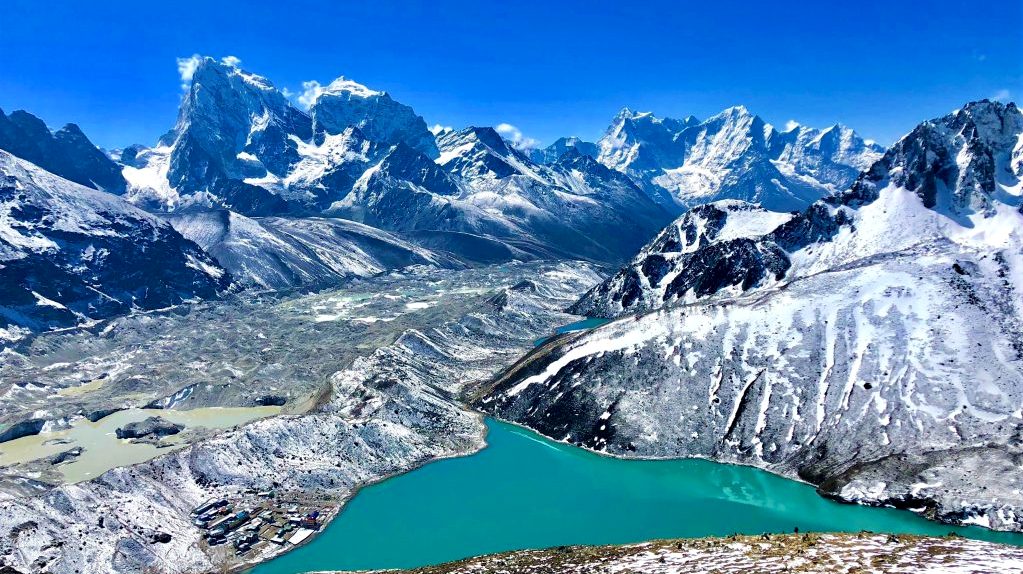
Key Highlights of Gokyo Lakes
-
Stunning Glacial Lakes: The Gokyo Lakes are the world’s highest freshwater lake system, comprising six main lakes, each with its unique beauty and turquoise blue waters.
-
Scenic Trekking Route: The trek to Gokyo Lakes meanders through lush valleys, traditional Sherpa villages, and rhododendron forests, offering diverse landscapes.
-
Gokyo Ri: Many trekkers climb Gokyo Ri, a nearby peak, for breathtaking views of Everest, Lhotse, Makalu, and Cho Oyu, among others.
-
Tranquil Environment: The area around Gokyo Lakes is less crowded than the Everest Base Camp route, providing a more peaceful trekking experience.
-
Rich Biodiversity: The region around the lakes is home to a variety of flora and fauna, including rare species like the snow leopard and the red panda.
-
Cultural Insights: The trek provides an opportunity to experience the lifestyle and hospitality of the Sherpa community in remote Himalayan settlements.
-
Photographer’s Paradise: The combination of crystal-clear lakes, rugged mountains, and pristine landscapes makes it an ideal location for photography enthusiasts.
-
Spiritual Significance: The lakes hold great spiritual importance for both Hindus and Buddhists, adding a sacred dimension to their natural beauty.
-
Ngozumpa Glacier: Trekkers get to witness the Ngozumpa Glacier, the longest glacier in the Himalayas, adding a dramatic element to the trek.
-
Eco-sensitive Area: Gokyo Lakes are part of the Sagarmatha National Park, a UNESCO World Heritage Site, emphasizing the importance of preserving this pristine environment.
Trekking to Gokyo Lakes with Luxury Holidays Nepal is an experience that goes beyond the ordinary. It not only showcases the raw beauty of the Everest Region but also allows trekkers to delve into a tranquil world, far removed from the beaten path. The journey to Gokyo Lakes is a blend of adventure, tranquility, and natural wonder, making it a must-visit destination for those seeking a unique Himalayan experience.
Three High Passes
The Three High Passes trek in the Everest Region is renowned for being one of the most challenging and exhilarating trekking routes in the Himalayas. This trek encompasses crossing the Kongma La, Cho La, and Renjo La passes, each offering its own set of unique landscapes and breathtaking vistas. Designed for the more adventurous and experienced trekkers, the Three High Passes trek is a journey through some of the most remote and stunning areas of the Everest Region.
Key Highlights of the Three High Passes
-
Kongma La Pass (5,535m/18,159ft): The highest and often considered the most challenging of the three passes. It offers incredible views of surrounding peaks and a sense of solitude.
-
Cho La Pass (5,420m/17,782ft): Known for its stunning glacier traverse and panoramic views of the Himalayas, including Ama Dablam and Cholatse.
-
Renjo La Pass (5,360m/17,585ft): Offers one of the best views of the Everest range and is known for its relatively easier trekking path compared to the other two passes.
-
Diverse Landscapes: The trek traverses through diverse terrains, including glacial moraines, rocky paths, and alpine forests, providing a constantly changing backdrop.
-
Remote and Less Crowded: This route is less traveled compared to the classic Everest Base Camp trek, offering a more peaceful and solitary experience.
-
Cultural Immersion: The journey takes you through remote Sherpa villages, allowing for deeper cultural engagement and understanding of the local lifestyle.
-
Wildlife and Flora: The region is home to unique Himalayan flora and fauna, including the possibility of spotting rare species like the snow leopard and the Himalayan Tahr.
-
Adventurous Trekking Experience: This trek is known for its challenging routes and high altitudes, making it a thrilling adventure for experienced trekkers.
-
Stunning Mountain Views: From each of the high passes, trekkers are rewarded with spectacular views of the Everest range and other majestic peaks.
-
Spiritual Sites: Along the route, there are opportunities to visit ancient monasteries and religious sites, deepening the spiritual aspect of the trek.
Embarking on the Three High Passes trek with Luxury Holidays Nepal ensures an adventure filled with awe-inspiring views, challenging terrains, and rich cultural interactions. It's an ideal choice for those who seek to push their limits and experience the raw beauty of the Everest Region in a comprehensive and adventurous manner.
Sherpa Culture
The Sherpa Culture in the Everest Region is an integral part of the trekking experience, offering trekkers a unique opportunity to immerse themselves in the rich traditions, lifestyles, and beliefs of the Sherpa people. Known for their mountaineering skills and deep-rooted connection to the Himalayas, the Sherpa community adds an invaluable dimension to any trek in this region. Their culture, deeply influenced by Tibetan Buddhism, is evident in every aspect of life in the high mountains.
Key Highlights of Sherpa Culture
-
Traditional Villages: Trekking through Sherpa villages like Namche Bazaar, Tengboche, and Khumjung offers insights into their traditional architectural styles and way of life.
-
Monasteries and Gompas: The region is dotted with ancient monasteries and gompas, such as Tengboche Monastery, which is central to Sherpa spirituality and community life.
-
Buddhist Festivals: The Sherpas celebrate various Buddhist festivals, with Mani Rimdu in Tengboche being one of the most famous, showcasing masked dances, prayers, and rituals.
-
Hospitality and Homestays: Sherpas are known for their warm hospitality. Many trekkers choose to stay in homestays to experience daily life in a Sherpa household.
-
Mountaineering Heritage: The Sherpa people have a profound connection with mountaineering, and their stories and experiences add to the allure of the Everest Region.
-
Language and Customs: Engaging with locals allows trekkers to learn about the Sherpa language, customs, and traditions, enhancing the cultural richness of their trek.
-
Traditional Cuisine: Sampling traditional Sherpa cuisine, like Sherpa stew and momo (dumplings), is a delightful way to experience their culture.
-
Handicrafts and Art: The region is known for its vibrant Thangka paintings, handicrafts, and handmade jewelry, reflecting the artistic skills of the Sherpa community.
-
Environmental Stewardship: Sherpas have a deep respect for nature, evident in their efforts to preserve the environment and their sustainable lifestyle practices.
-
Spiritual Connection: Their deep spiritual connection with the Himalayas is reflected in their respect for the mountains, often referred to as deities.
By exploring the Sherpa Culture with Luxury Holidays Nepal, trekkers gain a profound understanding and appreciation of the people who call the Everest Region their home. This cultural journey complements the scenic beauty of the treks, making it a holistic experience that goes beyond just the physical landscapes. The Sherpa culture is indeed the heart and soul of the Everest Region, providing an enriching backdrop to every trekking adventure in these majestic mountains.
Ama Dablam Base Camp
Ama Dablam Base Camp is a mesmerizing destination within the Everest Region, often overshadowed by the more famous Everest Base Camp but equally captivating. Ama Dablam, known as the 'Jewel of the Khumbu,' is one of the most beautiful mountains in the world, and its base camp offers trekkers a unique and relatively peaceful trekking experience with stunning views.
Key Highlights of Ama Dablam Base Camp
-
Stunning Mountain Views: Ama Dablam Base Camp provides an up-close view of the majestic Ama Dablam, a mountain renowned for its unique pyramid shape and striking beauty.
-
Less Crowded Trails: The trek to Ama Dablam Base Camp is less crowded than the more popular Everest Base Camp trek, offering a more tranquil and intimate experience with nature.
-
Challenging Trek: The trek to the base camp is both challenging and rewarding, with steep trails and stunning panoramas, suitable for trekkers seeking a less trodden path.
-
Cultural Insights: The route passes through traditional Sherpa villages, providing insights into the local culture, traditions, and lifestyle.
-
Diverse Landscapes: The trek encompasses diverse landscapes, from lush rhododendron forests to rocky terrain and alpine meadows.
-
Photography Opportunities: The dramatic scenery, including views of Mount Everest, Lhotse, and other peaks, makes it a haven for photography enthusiasts.
-
Acclimatization Hikes: The trek offers good acclimatization opportunities, with several side hikes and viewpoints en route.
-
Rich Flora and Fauna: The area around Ama Dablam is home to a variety of flora and fauna, adding an element of nature exploration to the trek.
-
Serene Camping Experience: Unlike the teahouse treks of Everest Base Camp, the Ama Dablam Base Camp trek often involves camping, providing a more immersive outdoor experience.
-
Spiritual Experiences: The trek includes visits to ancient monasteries and chortens, reflecting the spiritual aspect of the Sherpa community.
Trekking to Ama Dablam Base Camp with Luxury Holidays Nepal provides an exceptional experience that combines adventure with scenic beauty and cultural richness. This journey is not just a trek; it's an exploration into the heart of the Himalayas, offering a blend of awe-inspiring landscapes and a peek into the life of the high mountains. Ama Dablam Base Camp stands as a testament to the hidden treasures of the Everest Region, waiting to be explored by those who seek beauty beyond the beaten path.
Dingboche and Pheriche
Dingboche and Pheriche are two picturesque villages located in the heart of the Khumbu Valley in the Everest Region. These twin settlements, each with its unique charm, play a crucial role in the acclimatization process for trekkers heading towards Everest Base Camp and other high-altitude destinations. Nestled amidst stunning mountain landscapes, Dingboche and Pheriche offer a blend of natural beauty, cultural richness, and a peaceful respite from the more strenuous parts of the trek.
Key Highlights of Dingboche and Pheriche
-
Stunning Locations: Both villages are set against the backdrop of some of the highest peaks in the world, offering breathtaking views of mountains like Ama Dablam, Lhotse, and Nuptse.
-
Acclimatization Hubs: At altitudes of 4,410 meters (Dingboche) and 4,240 meters (Pheriche), these villages are key acclimatization stops for trekkers, allowing the body to adjust to the high altitude.
-
Unique Landscapes: Dingboche, known as the 'summer valley,' has sprawling pastures for grazing yaks, while Pheriche is characterized by a more rugged and windy terrain.
-
Cultural Insights: Both villages offer insights into the Sherpa way of life, with opportunities to interact with local communities and learn about their customs and traditions.
-
Trekking Routes: They serve as junctions for various trekking routes, including paths to Everest Base Camp, the Three High Passes, and other notable destinations in the region.
-
Mountain Climbing Preparations: Pheriche is home to a high-altitude medical clinic run by the Himalayan Rescue Association, which offers education and assistance to trekkers and climbers.
-
Lodging and Hospitality: The villages provide comfortable lodging options, with teahouses offering warm hospitality and traditional Nepalese cuisine.
-
Photography Opportunities: The unique landscapes and traditional Sherpa architecture provide excellent photography opportunities.
-
Peaceful Environment: Away from the bustle of busier towns like Namche Bazaar, Dingboche and Pheriche offer a peaceful environment, ideal for rest and rejuvenation.
-
Side Treks and Hikes: There are several side treks and hikes available from both villages, offering trekkers the chance to explore the surrounding areas and enjoy panoramic mountain views.
Exploring Dingboche and Pheriche with Luxury Holidays Nepal is an integral part of the Everest Region trekking experience. These villages not only provide essential stops for acclimatization but also offer a glimpse into the heart of the Sherpa community and the stunning natural beauty of the Himalayas. The journey through Dingboche and Pheriche is a harmonious blend of cultural immersion, natural exploration, and preparation for the higher altitudes of the Everest trek.
Luxury Everest Region Trekking
Embarking on a luxury trek through the Everest Region with Luxury Holidays Nepal elevates the classic trekking experience to new heights of comfort, exclusivity, and personalization. This luxury trekking adventure is designed for those who wish to explore the majestic Everest Region without compromising on comfort and style. From deluxe lodgings to personalized services, every aspect of the trek is meticulously planned to ensure a memorable and comfortable journey through the heart of the Himalayas.
Key Features of Luxury Everest Region Trekking
-
Premium Accommodations: Stay in the finest lodges and luxury teahouses available in the Everest Region, offering comfortable bedding, en-suite bathrooms, and often, stunning mountain views.
-
Personalized Services: Enjoy personalized services including private guides, porters, and even a personal chef in some cases, ensuring a trek that is tailored to your preferences and pace.
-
Gourmet Cuisine: Savor gourmet meals, a mix of local and international cuisine, prepared with the highest quality ingredients, often accompanied by fine wines and other beverages.
-
Private Transportation: Utilize private transportation for transfers to and from the trailheads, including the option of helicopter transfers to skip the more challenging parts of the trek or for a scenic aerial tour of the Himalayas.
-
Wellness and Relaxation: Access to wellness facilities in some lodges, including spas, saunas, and massage services, perfect for relaxing after a day of trekking.
-
Exclusive Experiences: Engage in exclusive experiences like private cultural tours, visits to monasteries, meetings with local dignitaries, or special access to local events and festivals.
-
Safety and Comfort: Ensured safety with experienced guides and porters, and the provision of high-quality trekking gear and equipment for comfort and convenience.
-
Scenic Beauty: Experience the breathtaking beauty of the Everest Region, including visits to iconic locations like Everest Base Camp, Kala Patthar, and Gokyo Lakes, with the added luxury of comfortable lodgings and services.
-
Cultural Immersion: Delve into the rich Sherpa culture with exclusive cultural experiences, ensuring a deeper understanding and appreciation of the local traditions and lifestyle.
-
Customizable Itineraries: Flexibility to customize your itinerary according to your interests and physical ability, with options to include additional rest days, side treks, or specific cultural activities.
With Luxury Holidays Nepal, luxury trekking in the Everest Region is not just about reaching the destination; it's about enjoying every moment of the journey in the most comfortable and lavish manner possible. This experience is perfect for those who want to combine the adventure of Himalayan trekking with the comforts and exclusivity of a luxury vacation.
FAQs - Best Places to Explore During Everest Region Trekking
Q: What is the best time to trek in the Everest Region?
A: The best times to trek in the Everest Region are during the pre-monsoon season (March to May) and the post-monsoon season (September to November). These periods offer clear skies, stable weather, and excellent visibility.
Q: How difficult is the Everest Base Camp trek?
A: The Everest Base Camp trek is considered moderately difficult. It doesn't require technical climbing skills, but trekkers should be physically fit and prepared for walking 5-7 hours a day on mountainous terrain.
Q: What are the accommodation options like on the trek?
Accommodations range from basic teahouses offering Nepali cuisine and dormitory-style sleeping arrangements to luxury lodges with more amenities and comforts.
Q: Is altitude sickness a concern and how can I prevent it?
A: Altitude sickness is a concern in the Everest Region. To prevent it, ascend slowly, acclimatize properly, stay hydrated, and consider taking altitude sickness medication after consulting with a doctor.
Q: What should I pack for the trek?
A: Essential items include good-quality hiking boots, warm clothing, a sleeping bag, a day pack, a water purification system, and personal medications.
Q: Are there any permits required for Everest Region trekking?
A: Yes, trekkers need a TIMS card (Trekker's Information Management System) and a Sagarmatha National Park permit.
Q: Can I experience Sherpa culture during the trek?
A: Absolutely! The trek goes through many Sherpa villages where you can experience their culture, visit monasteries, and interact with locals.
Q: How long does it take to complete the Everest Base Camp trek?
A: The standard Everest Base Camp trek typically takes about 12-14 days, depending on the itinerary and acclimatization stops.
Q: Is travel insurance necessary for this trek?
A: Yes, travel insurance that covers high-altitude trekking up to 6,000 meters, emergency evacuation, and medical expenses is strongly recommended.
Q: Can I charge my electronic devices on the trek?
A: Yes, most teahouses and lodges offer charging facilities, but it's advisable to bring additional power banks or solar chargers.
Q: Is there internet access in the Everest Region?
A: Internet access is available in most villages along the trekking routes, either through Wi-Fi in teahouses or local cellular networks, though it can be unreliable or slow at higher altitudes.
If you need any further information, please contact us by email: at [email protected], Phone: at +977- 985 100 5129 (WhatsApp)

